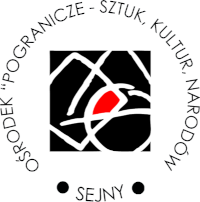Understanding the intercultural dialogue
Intercultural dialogue
means a program of educational and artistic nature, implemented in a particular community and in a particular place. It is directed to inhabitants of multi-cultural cities andregions, where the people of different nationalities and religions live side by side. The program can also focus on the areas which arecurrently inhabited mostly by only one dominant group, but with the rich traditions of cultural diversity, which still consist an important element of local memory and identity.
Intercultural dialogue
means a practice of ethos of tolerance in the sphere of daily life. Arts and education constitutes a vehicle that makes this practice possible. And for this, a workshop, craft, and a long-term perspective are required.
Intercultural dialogue
strives to answer the question how the tradition of cultures’ co-existence, which for ages has been crucial for development and level of civilization of such regions, can be put in a contemporary context, and how this potential can be revitalized and used to build open societies.
Intercultural dialogue
can be accomplished only as a long-term activity. That is why it looks for some long duration forms. The events that happen only once (like for example an exhibition, a festival, or a seminar) are treated only as stages of the process, which is conceived on a wider scale.
Intercultural dialogue
is directed to various social groups. It is not directed to national minorities only. Instead, it strives to perceive a community as a whole, crossed within with some borders and divisions which need bridges to be built between. The young generation is a special target group for the program. It is somewhat like training a sense of harmony during the musical education: the earlier the training begins, the better.
Intercultural dialogue
serves social integration. It is not an assimilation program. Cultural differences (that is language, religion, customs etc.) are favorable for the dialogue. It can be helpful in cultivating and preserving them, by means of the art practices. But it does not stop at the differences. It initiates dialogue, co-operation and interaction. It reinvents the agora for the society– a place for meetings and civic identity.
Intercultural dialogue
is needed for all the places which have experienced wars among the neighbors and ideologies hostile to 'the other.' But it is not a conflict resolution program. Activities based on education and arts provide for recalling the positive tradition of common cultural heritage. In this sense, the program can have some preventive and therapeutic impact.
Intercultural dialogue
is a participation program. It seeks such forms that would enable the largest possible part of a community to participate in creative process, to find analogies with individuals' personal life experiences and vicissitudes, and to involve in shaping the content of the program.
Intercultural dialogue
can be a regional (designed, for example, for the Caucasus) or an international program. It is important, however,
that the activities should be related to the 'organic work,' carried on every day basis, for a particular community
and in a particular place.
Intercultural dialogue
should be rooted in, and develop from this particular place and community, within the pale of which it is implemented. It is important for this, what we call the ethos of tolerance and the richness of civilization, to be imbibed with the local tradition, so they could be recognized as a value deriving from the local wisdom. This is not in conflict with universality, which is an important aspect of the program too. It just means discovering an universal dimension in locality. Thus, the program is even closer connected to the people and place, which it has as its objects.
Intercultural dialogue
tends to activities of an interdisciplinary and comprehensive kind, by which the new models aimed at social change and development can be worked out. The most favorable institutions for implementing the program would be Centers for Intercultural Dialogue, launched especially for this particular goal and specialized in a long-term work in this field. It is not excluded, however, that the program could be successfully carried on by other institutions like for example, museums, culture centers, theatres, schools, or NGOs.
Intercultural dialogue
is also a kind of craft that should be learned and studied for years. For this reason, the program includes educating the culture animators. This would be a new opportunity for individuals who are pedagogues or artists with a passion for community engagement, but often remain in the background of the general social change process and fail to find
their place in it. The result is that the general cultural activity is not of such significance for the society rebuilding like it could be, if we take into account how powerful potential it has, and how important for people their cultural identity is.
Intercultural dialogue
is based on three pillar-notions which determine the dialogue practice: active culture (there is no scene, on which ‘a performer’ is presenting something to the others, but one creative process based on participation), Buildung ('organic' work on the grassroots level) and long duree (long-duration process, arranged for long period of time).
Krzysztof Czyżewski

